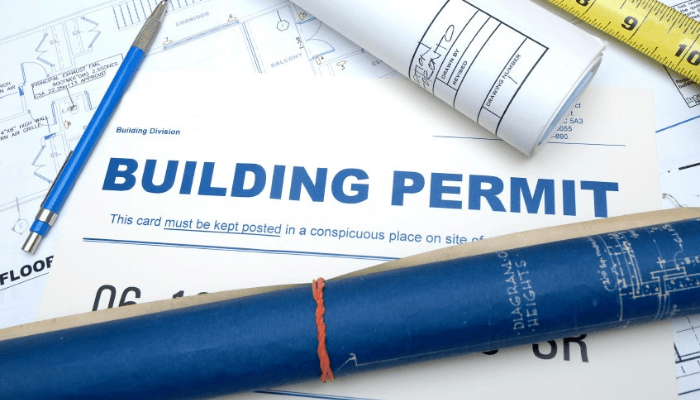The Imperative of Digitalization and Transparency in Building Permit Acquisition
The construction industry, particularly in rapidly developing urban centers like Lagos, Nigeria, faces persistent challenges related to bureaucratic delays and a lack of transparency in the building permit acquisition process. These inefficiencies often incentivize developers to circumvent regulations, jeopardizing the structural integrity of buildings and posing significant risks to public safety. Stakeholders in the industry are increasingly advocating for the adoption of digital platforms to streamline the permit process, enhance transparency, and mitigate the potential for corruption. Digital platforms can automate procedures, facilitate online document submission and tracking, and provide real-time updates on the status of applications. This reduces opportunities for bribery and arbitrary decisions, promoting a level playing field for all developers. Furthermore, a transparent system fosters accountability by creating a clear audit trail of all transactions, ensuring that all parties involved adhere to established regulations.
The Multi-Faceted Approach to Construction Safety and Regulation Enforcement
Addressing the recurring issue of building collapses requires a comprehensive, multi-faceted approach that encompasses stringent regulations, technological innovation, and public education. Government agencies must strengthen existing building codes and ensure their rigorous enforcement through regular inspections and sanctions against violators. This includes holding developers accountable for deviations from approved plans and the use of substandard materials. Furthermore, investing in research and development of innovative building materials tailored to the specific environmental conditions of Lagos is crucial. Such initiatives could lead to the development of more resilient and sustainable construction practices, better suited to withstand the local climate and soil conditions. Complementing these regulatory measures, public awareness campaigns are essential to educate the public about the risks associated with illegal constructions and modifications. By highlighting the potential consequences of non-compliance, these campaigns can empower citizens to demand adherence to safety standards and report violations to the appropriate authorities.
Leveraging Technology for Enhanced Site Analysis and Continuous Monitoring
Technological advancements offer powerful tools for enhancing site analysis, construction monitoring, and regulatory oversight. Drone technology, for example, enables comprehensive aerial surveys and inspections, providing valuable insights into site conditions, construction progress, and potential structural vulnerabilities. Advanced surveying equipment, coupled with Building Information Modeling (BIM) software, allows for precise measurements and the creation of detailed 3D models, facilitating accurate assessment of structural integrity and compliance with building codes. These technologies can also be employed for continuous monitoring of construction sites, allowing for early detection of deviations from approved plans and potential safety hazards. The data collected through these technological tools can be integrated into digital platforms, further enhancing transparency and enabling real-time information sharing between developers, regulatory agencies, and other stakeholders.
The Ojodu-Berger Collapse: A Case Study in Regulatory Failure and the Human Cost of Negligence
The recent building collapse in Ojodu-Berger, Lagos, serves as a stark reminder of the tragic consequences of regulatory failures and negligence within the construction industry. The incident underscores the urgent need for stricter enforcement of building codes, robust oversight, and a commitment to ethical practices. The collapse, attributed to a failure to adhere to existing regulations, coupled with the use of substandard materials and inadequate supervision, highlights the dangers of prioritizing cost-cutting over safety. Such incidents not only result in the loss of lives and livelihoods but also erode public trust in the construction industry and regulatory bodies. The Ojodu-Berger tragedy emphasizes the critical importance of investing in thorough geotechnical investigations, engaging qualified structural engineers, and implementing rigorous quality control measures throughout the construction process.
Fostering a Culture of Safety and Compliance within the Construction Industry
Building a safer and more resilient urban environment requires a fundamental shift towards a culture of safety and compliance within the construction industry. This necessitates a collaborative effort from all stakeholders, including government agencies, professional bodies, developers, and the public. Government agencies must intensify enforcement efforts, conduct regular inspections, and hold developers accountable for any violations. Professional bodies, representing architects, engineers, and other construction professionals, have a crucial role to play in promoting ethical practices and ensuring adherence to professional standards. Developers must prioritize structural integrity and invest in qualified professionals and quality materials, recognizing that safety is not a negotiable aspect of construction. Public awareness campaigns are vital to educate citizens about the importance of engaging qualified professionals and demanding compliance with building codes.
A Collaborative and Decisive Response for a Safer Urban Future
The frequency of building collapses in Lagos demands a collaborative and decisive response from all stakeholders. Only through rigorous enforcement of regulations, innovative solutions, and a unwavering commitment to ethical practices can the city hope to avert future tragedies and ensure the safety of its citizens. This includes fostering a culture of transparency and accountability within the construction industry, leveraging technology for enhanced monitoring and oversight, and empowering the public to demand adherence to safety standards. The lives and livelihoods of Lagos residents are at stake, making it imperative to prioritize safety and resilience in the pursuit of urban development. By working together, stakeholders can create a safer, more sustainable, and resilient built environment for future generations.


